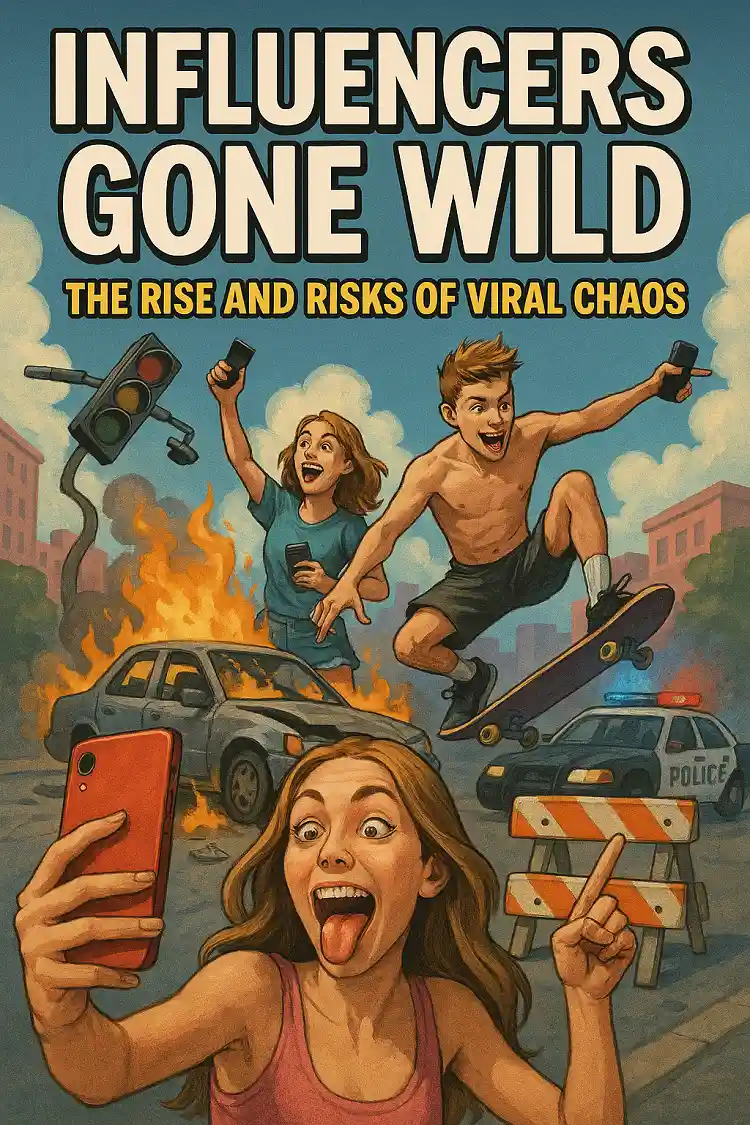The phenomenon of “Influencers Gone Wild” highlights the extreme, controversial, and often reckless behavior of social media influencers in their pursuit of attention, engagement, and fame. This trend reflects both the power and pitfalls of influencer culture in the digital age.

What Does “Influencers Gone Wild” Mean?
The term refers to instances where influencers engage in bold, shocking, or unethical actions to generate buzz online. These behaviors often go beyond societal norms and include:
- Outrageous stunts
- Controversial content
- Ethical missteps
- Participation in viral challenges
The primary goal is to attract attention, increase visibility, and maintain relevance in an oversaturated digital landscape.
Notable Examples
Several influencers have become infamous for their “gone wild” moments:
Logan Paul: In 2017, he faced global backlash for filming a deceased individual in Japan’s Aokigahara Forest. The insensitive video led to public outrage, loss of sponsorships, and a tarnished reputation.
Jake Paul: Known for his wild antics, Jake hosted large parties during the COVID-19 pandemic despite lockdown restrictions. His behavior attracted criticism and legal scrutiny.
Belle Delphine: She went viral in 2019 by selling jars of her bathwater as a quirky gimmick. While it gained her massive attention, it also sparked debates about exploitation and ethics.
Fyre Festival Promoters: Influencers like Kendall Jenner faced lawsuits for promoting the disastrous Fyre Festival, which left attendees stranded without basic amenities.
Why Influencers Go Wild?
Several factors drive this behavior:
- Algorithmic Incentives: Social media platforms reward high engagement, often prioritizing controversial or emotionally charged content that goes viral.
- Pressure to Stay Relevant: With millions of creators competing for attention, influencers feel compelled to push boundaries to remain in the spotlight.
- Authenticity Appeal: Fans crave raw, unfiltered moments, encouraging influencers to share more extreme aspects of their lives.
- Monetary Gains: Controversial content can lead to increased views, ad revenue, and brand deals. Shock value often translates into financial success.
The Dark Side
While going wild may bring temporary fame or fortune, it comes with significant risks:
Mental Health Issues: The constant pressure to create engaging content can lead to anxiety, burnout, and depression among influencers.
Ethical Concerns: Stunts that promote harmful behaviors or mislead audiences erode trust and set dangerous precedents for followers.
Backlash and Cancellation: Public outrage can result in loss of sponsorships, platform bans, or long-term damage to an influencer’s career.
Impact on Fans: Young audiences often mimic risky behaviors seen online, leading to injuries or other negative consequences.
Cultural Implications
The “Influencers Gone Wild” trend underscores a broader cultural shift where fame is increasingly tied to controversy. It challenges traditional notions of celebrity by prioritizing virality over substance. While some moments spark positive change (e.g., the Ice Bucket Challenge), others highlight the dangers of a fame-driven society.
In conclusion, while influencers wield immense power to shape opinions and trends, their “wild” antics reveal both the allure and dangers of digital fame. As this trend continues to evolve, it raises important questions about responsibility, ethics, and the future of influencer culture.
